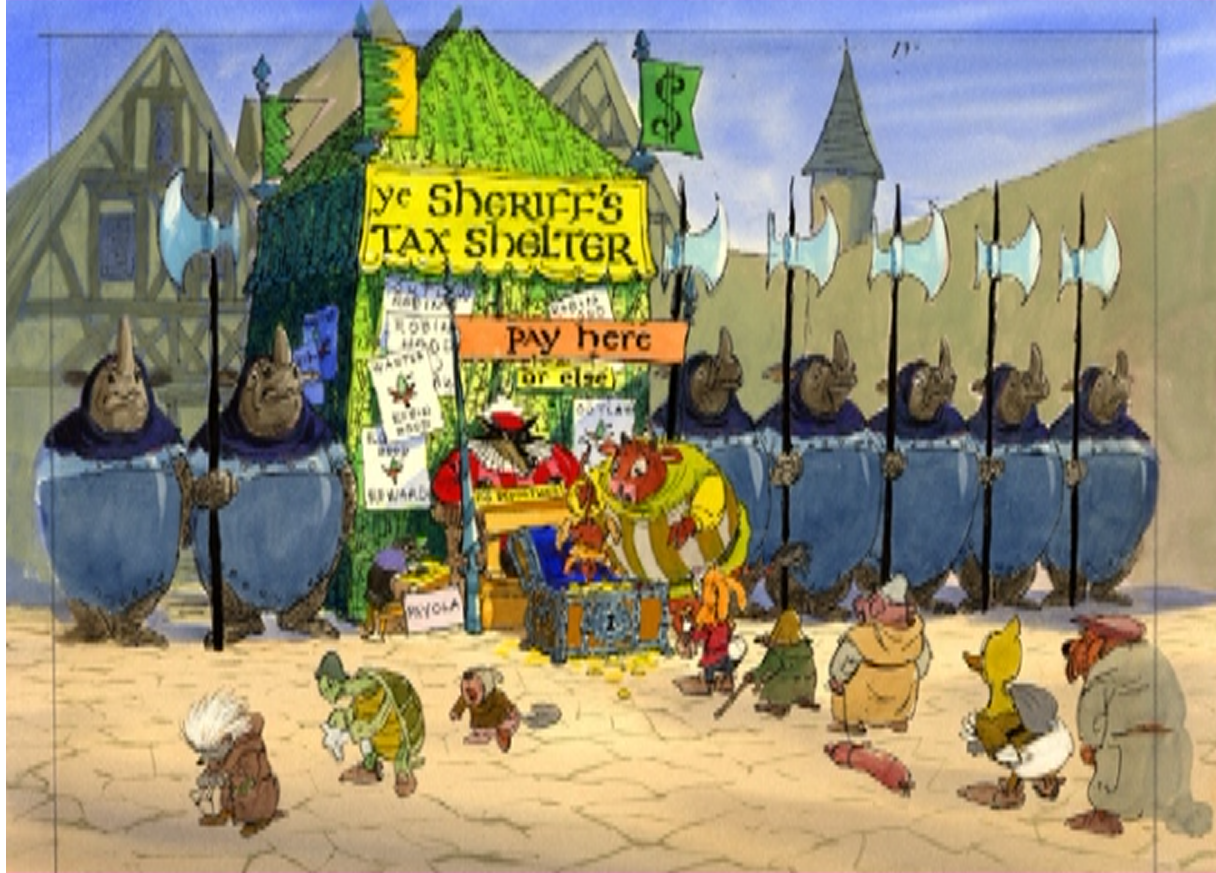

In sum, the sheriff exists because Robin Hood needs the sheriff to exist. Without a foe who embodies local and national governmental corruption, indicating both personal failings and systemic problems,Robin Hood cannot hope to stand as a resistance figure to unjust authority. Consequently, the sheriff of Nottingham is rarely granted so much as a personal name. For example, a score of 1/100 for 'hot (not cold)' is equivalent to a score of 100/100 for 'cold (not hot)'. This is because descriptions that had values lower than the midpoint were reversed. In sum, the sheriff exists because Robin Hood needs the sheriff to exist. Certainly in the late medieval / early modern ballad tradition the sheriff serves more as an incompetent stock villain over whom the protagonist – for the early Robin Hood can hardly be called a hero – continually triumphs. The lowest rating for any description in the table is 50.0 despite a 1 to 100 scale being used.
#Taxation and the sherriff of nottingham serial#
The narrative continuity that many modern audiences expect from serial productions on the same topic is not present in the medieval Robin Hood materials Robin is not the same "person" from story to story. Nor is the sheriff the same "person": the sheriff is killed in The Geste of Robyn Hode and in Robin Hood and Guy of Gisborne because they are separate stories and are not intended to cohere. Read Less Sheriff, to Robin Hood: "I'll cut your heart out with a spoon!" Even in modern film productions the character is still often unnamed. Modernity has not been kind to the sheriff (though his survival rate has generally improved) and he has barely escaped that early anonymity in modern film and literature.

Even in modern film productions the character is still often unnamed, largely because he continues to serve as an identifiable stock villain. When the sheriff appears in modern productions, his second in command, Guy of Gisborne, frequently steals the show.
#Taxation and the sherriff of nottingham series#
The exception to this rule is when the sheriff is played as utterly crazed and insane: for example, in the television series Robin of Sherwood and the feature film Robin Hood: Prince of Thieves, where the sheriff's antics draw more narrative and audience attention than his position as Robin Hood's chief enemy. Thus, until the 1970s, the history of the sheriff of Nottingham as a character was a virtual tabula rasa. Late twentieth- and early twenty-first-century cinematic tastes for consistent characterization have produced more detailed "stock" characteristics for the sheriff.Įvery novel, film, television series, or other media production which felt the need to include the sheriff used the character differently, and with little lasting impact. However, the sheriff of Nottingham has been appearing alongside Robin Hood since the fifteenth century and, like his nemesis, his history is complex.


 0 kommentar(er)
0 kommentar(er)
